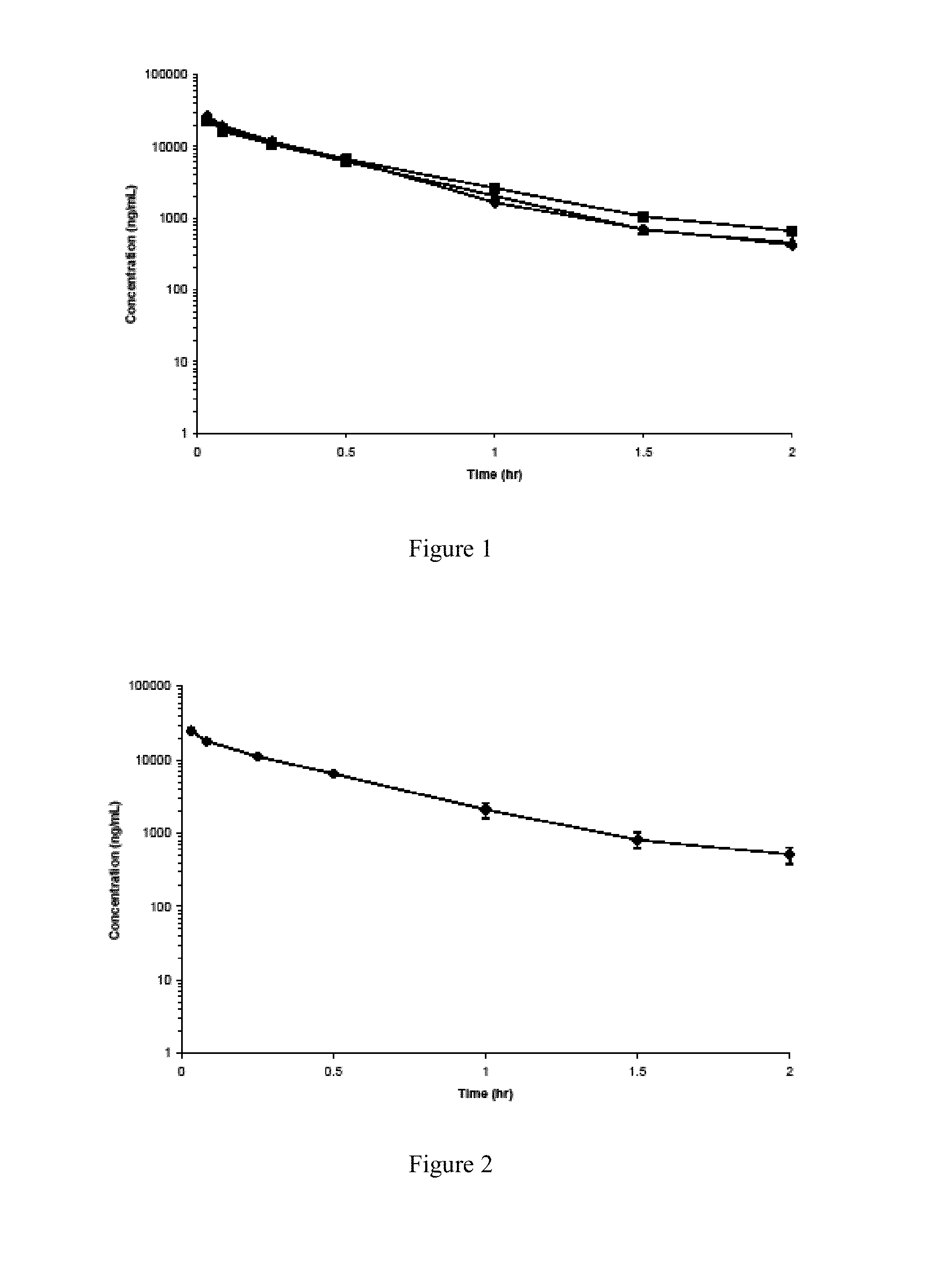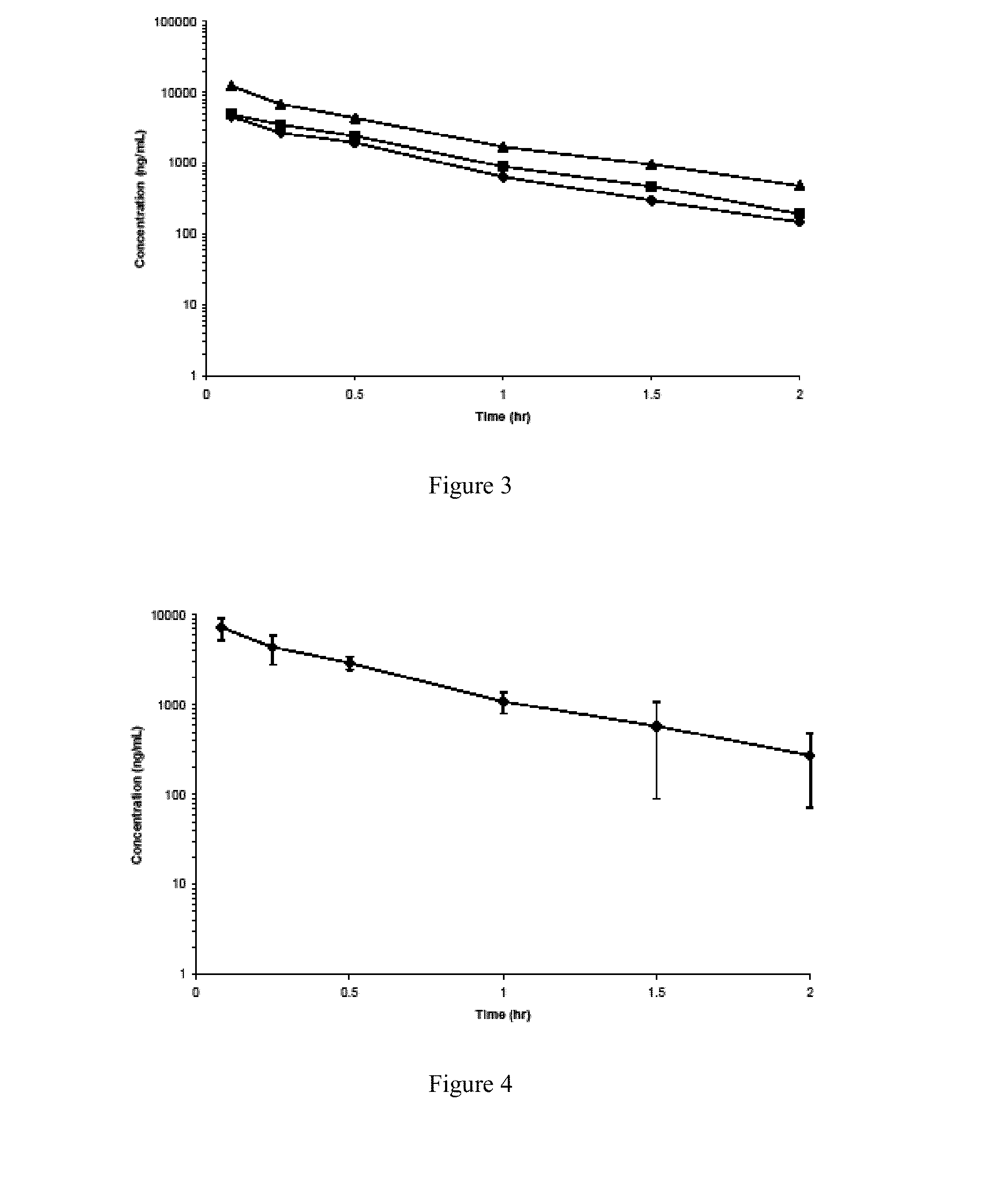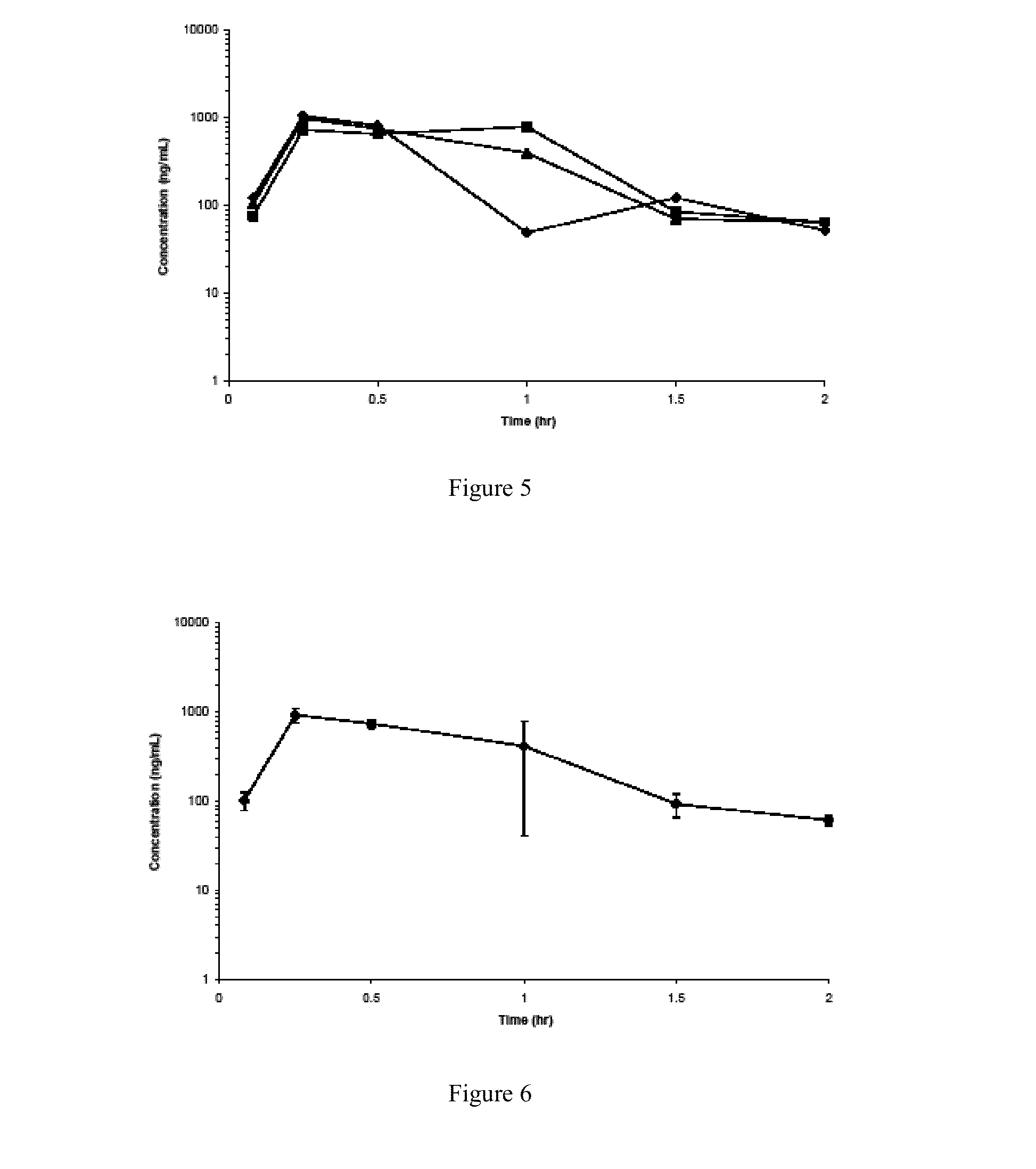Formulations for enhanced bioavailability of zanamivir
a technology of zanamivir and bioavailability, which is applied in the field of enhancing the permeability and bioavailability of polar active agents, can solve the problems of poor oral bioavailability of zanamivir, and achieve the effect of increasing the amount of zanamivir
- Summary
- Abstract
- Description
- Claims
- Application Information
AI Technical Summary
Benefits of technology
Problems solved by technology
Method used
Image
Examples
example 1
General Experimental Procedures
[0101]Permeability enhancers such as CAPMUL® MCM L8, GATTEFOSSÉ 61A through GATTEFOSSÉ 61H compositions, glycerol, 3-(N,N-dimethylpalmitylammonio)propane sulfonate (PPS), Leuclne, Alanine, Gelucire 44 / 14, Tween 20, N-methylpiperazine, and d-alpha-tocopheryl polyethylene glycol 1000 succinate (TPGS) were each mixed with zanamivir and vortexed and sonicated. For example, in the case of CAPMUL® MCM L8, the enhancer was mixed with zanamivir in amounts such that the weight ratio of enhancer to zanamivir was in the range of about 333:1 to about 1333:1, and such that when the mixture was subsequently diluted in HBSS to a level at which zanamivir was present at a concentration of 15 mg / mL (0.0015%) the enhancer concentration of the sample was in the range of 0.5% to 2.00%, as shown in the table below. Mixing was conducted by sonication (using either a bath or probe sonicator) which converted the relatively low viscosity liquid mixture to a highly viscous or pa...
example 2
Methodology for Zanamivir
[0119]Dosing solution samples were assayed by LC-MS / MS using electrospray ionization. The chromatographic system consisted of Perkin Elmer series 200 micropumps and autosampler equipped with a Waters Atlantic® HILIC Silica 3 μM, 2.1×50 mm column. The mass spectrometer was a PE Sciex API 4000 with electrospray interface in multiple reaction monitoring mode. Specificity of the analytical method was evaluated and neither of the excipients was found to interfere with the analysis of zanamivir. Stock solutions (1 mg / mL zanamivir) were prepared in water. Standards (eight concentrations) were prepared in the appropriate matched matrix (HBSSg or Sprague-Dawley rat plasma containing sodium heparin) and diluted 50-fold with methanol. Experimental samples were treated identically.
[0120]Analytical stock solutions (1 mg / mL Zanamivir) were prepared in water.
[0121]Standards and samples were prepared in Sprague Dawley rat plasma containing sodium heparin as an anticoagulant...
example 3
Volume of PBS Remaining in the ID Dosing Cannula after the Study
[0141]For each intraduodenal dose group, after dosing the 50 μL dosing solution, a flush of a small volume of air pocket and 125 μL of PBS were administered to the dosing cannulae. Approximately 30 μL of the flushing PBS probably entered the duodenum after pushing dosing solution and the air pocket into the duodenum lumen. This was estimated because less resistance was observed from the dosing syringe after the dosing solution and air pocket were administered to the duodenum lumen. After the last sampling time point, the abdominal region of the animal was opened and the intraduodenal cannula was extracted. Air was used to force the remaining PBS through the cannula to be collected into a micro centrifuge tube. Residual PBS droplets adhering to the inside wall of the cannulae were observed. After the best effort to collect the PBS from the cannulae, the volume of the liquid collected from each animal was measured with a ...
PUM
| Property | Measurement | Unit |
|---|---|---|
| size | aaaaa | aaaaa |
| time | aaaaa | aaaaa |
| time | aaaaa | aaaaa |
Abstract
Description
Claims
Application Information
 Login to View More
Login to View More - R&D
- Intellectual Property
- Life Sciences
- Materials
- Tech Scout
- Unparalleled Data Quality
- Higher Quality Content
- 60% Fewer Hallucinations
Browse by: Latest US Patents, China's latest patents, Technical Efficacy Thesaurus, Application Domain, Technology Topic, Popular Technical Reports.
© 2025 PatSnap. All rights reserved.Legal|Privacy policy|Modern Slavery Act Transparency Statement|Sitemap|About US| Contact US: help@patsnap.com



